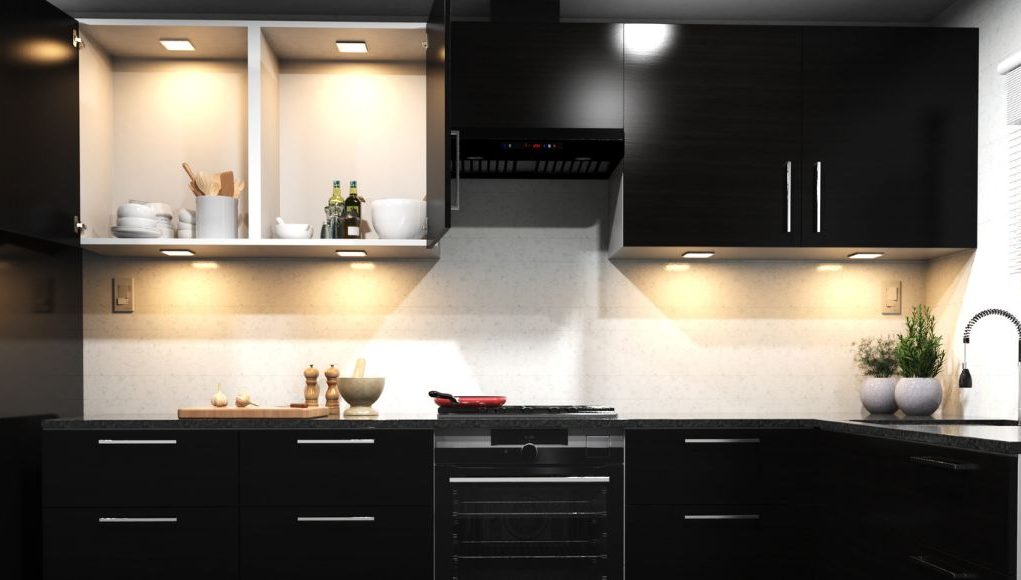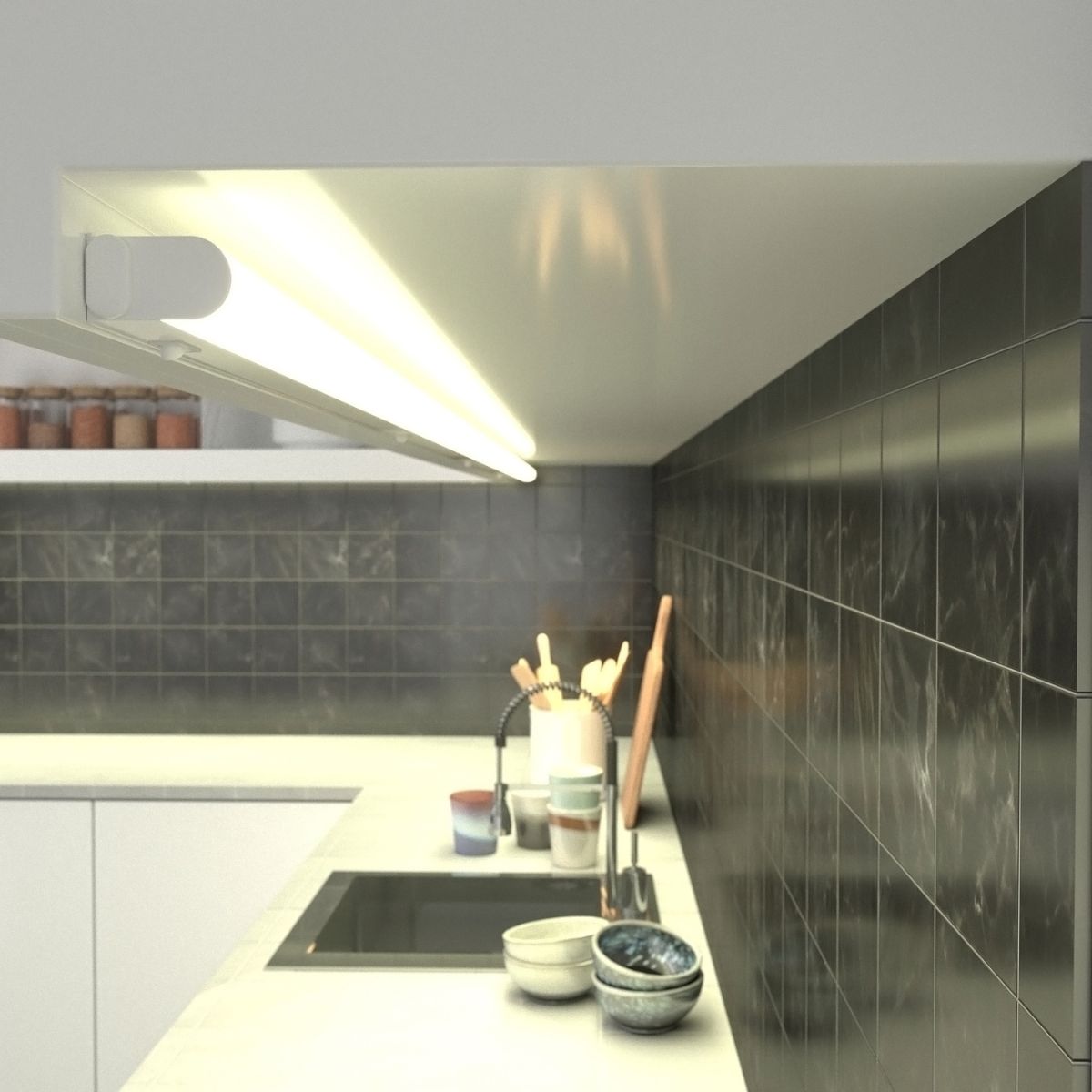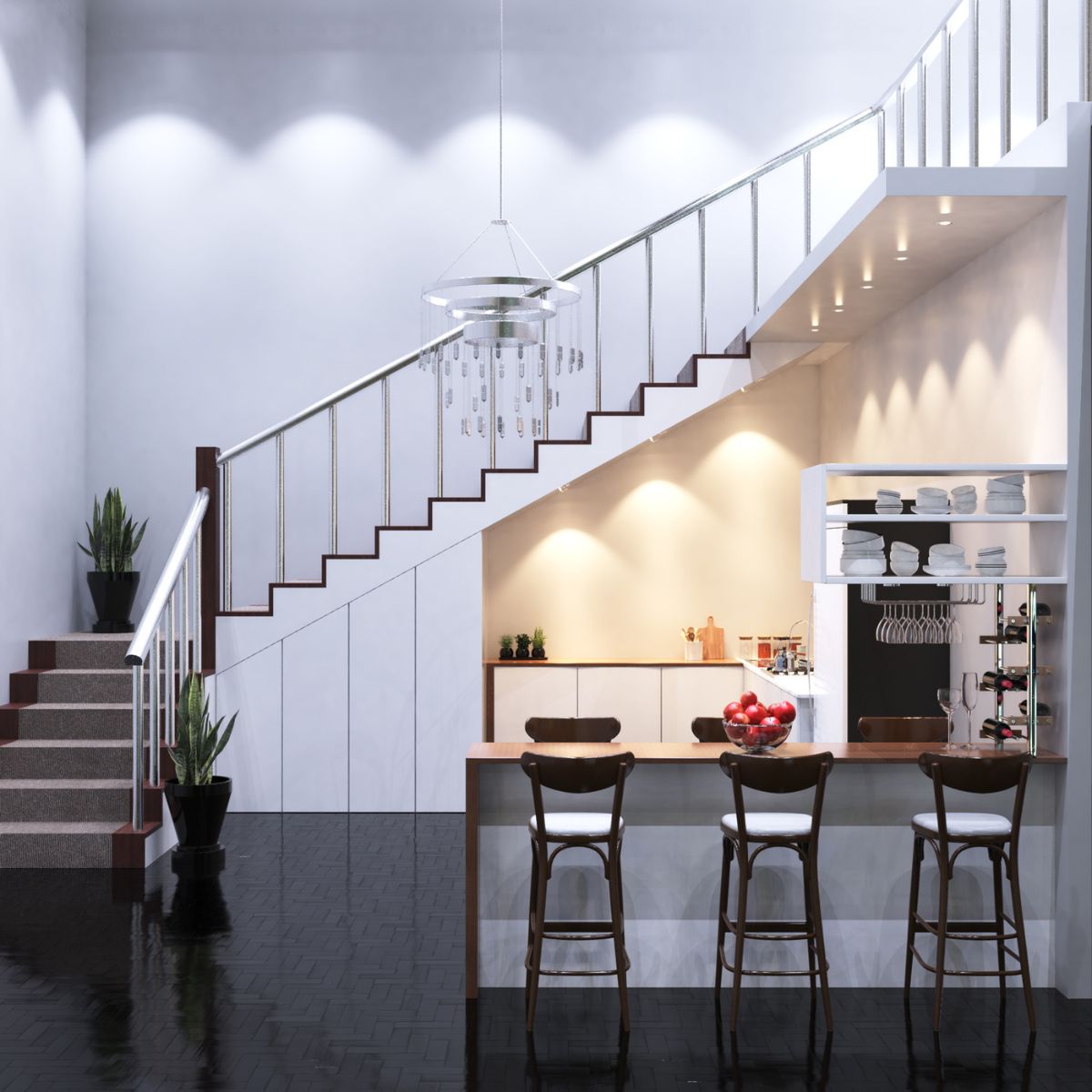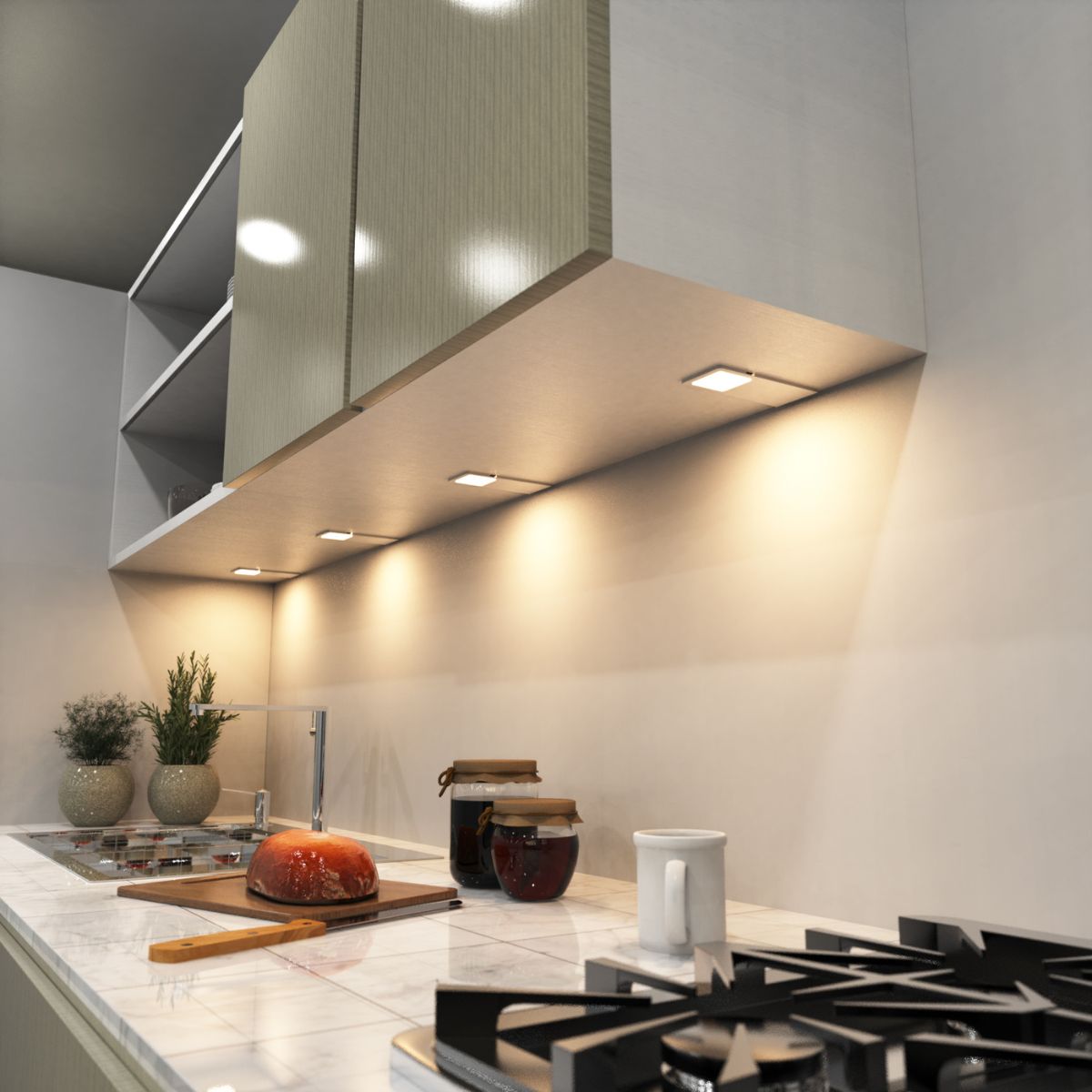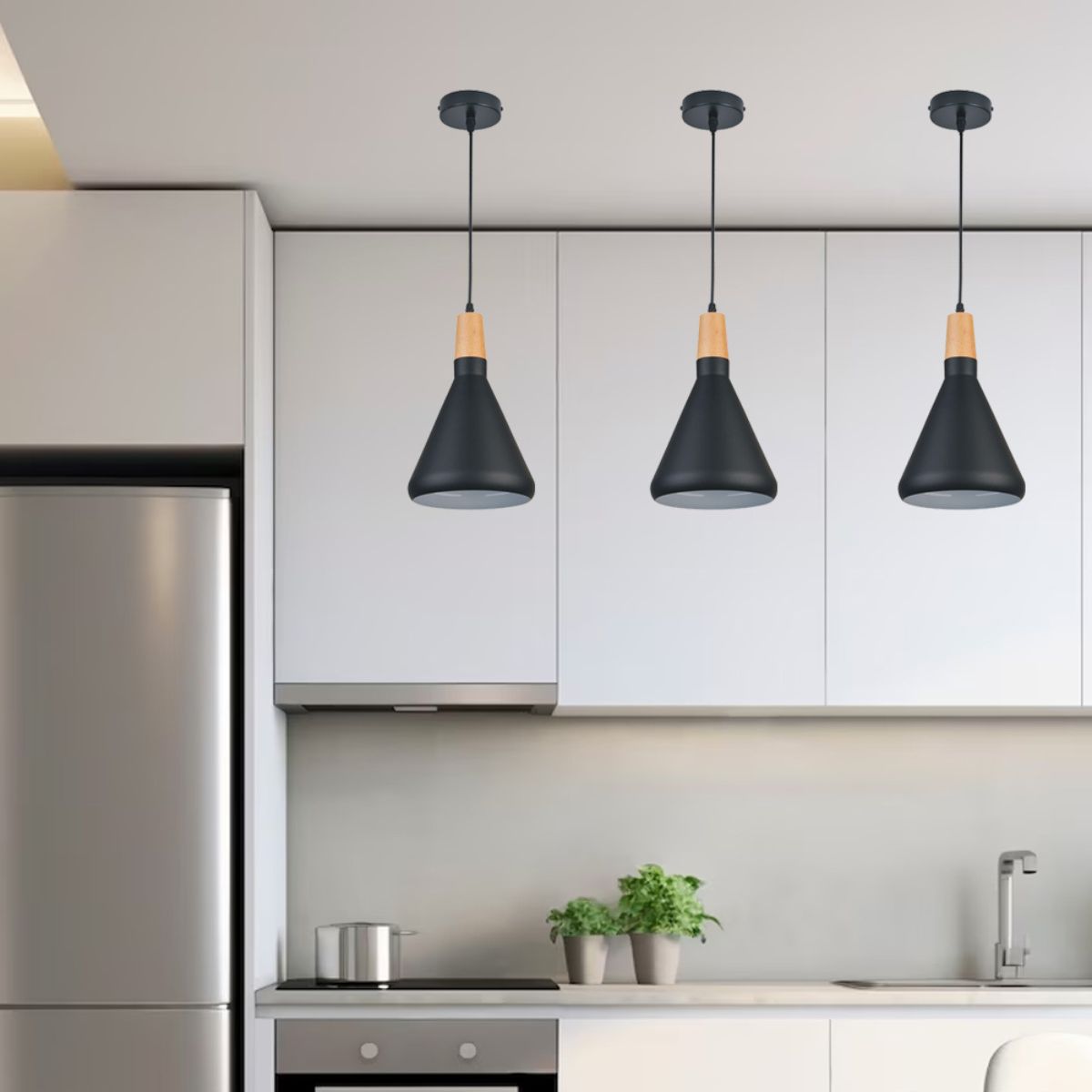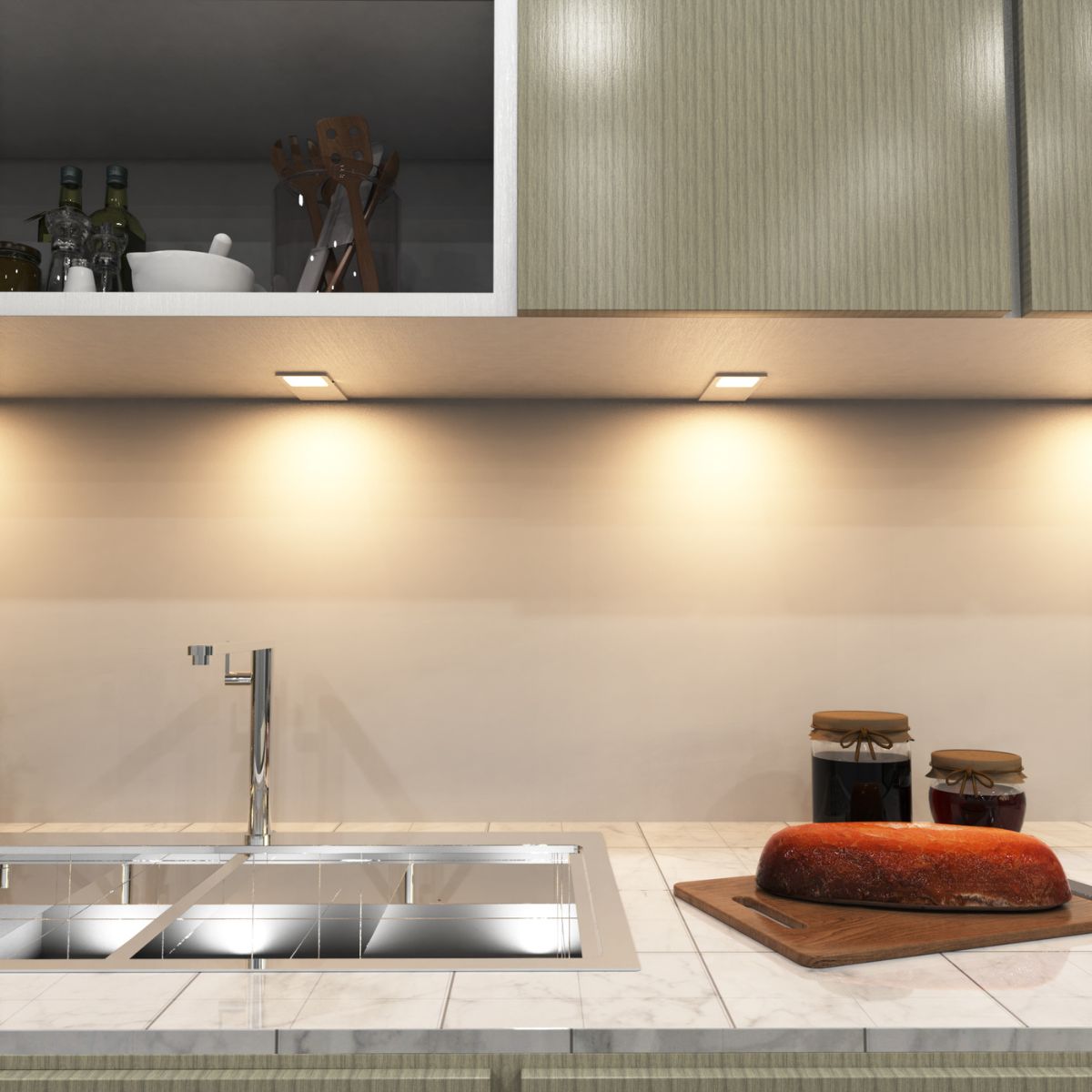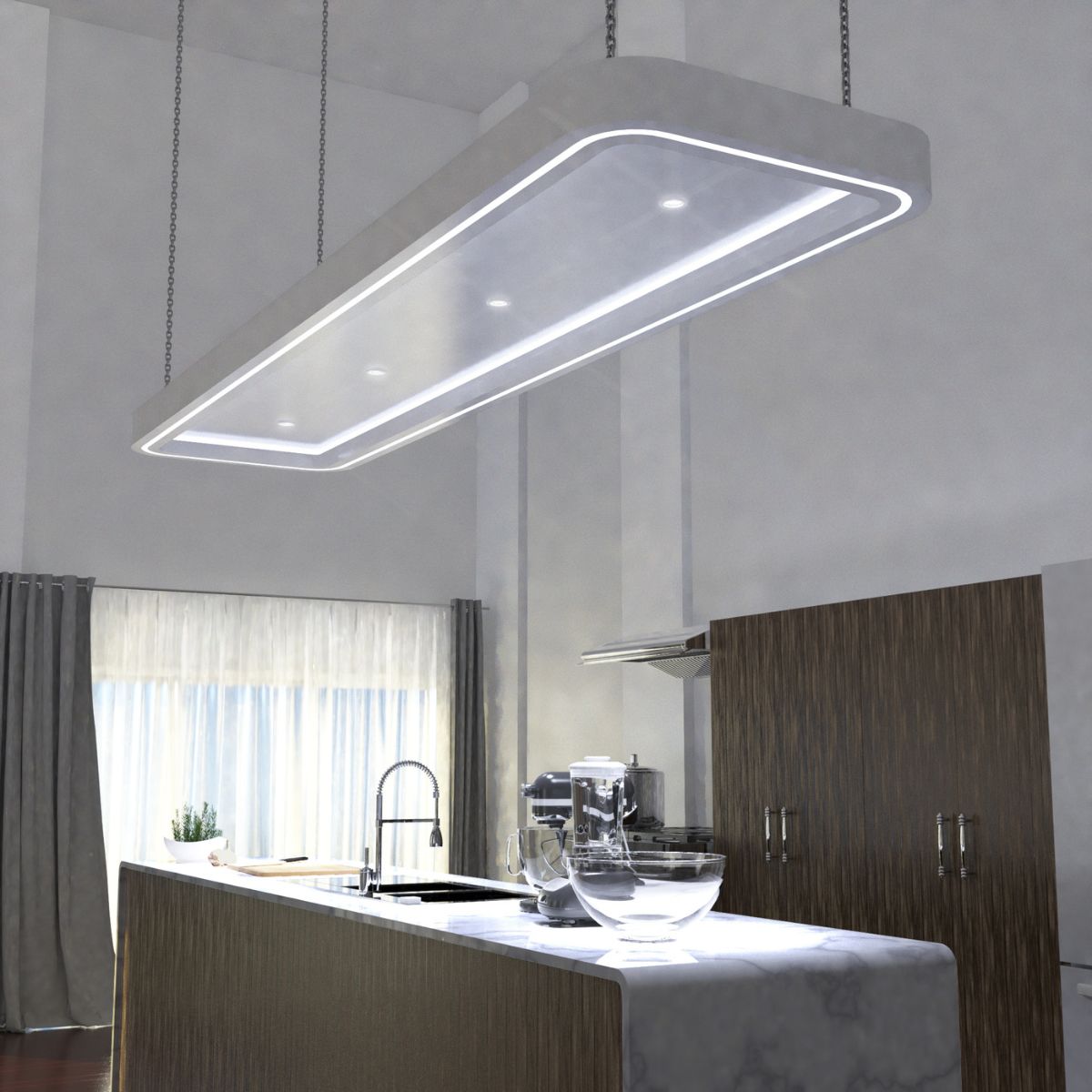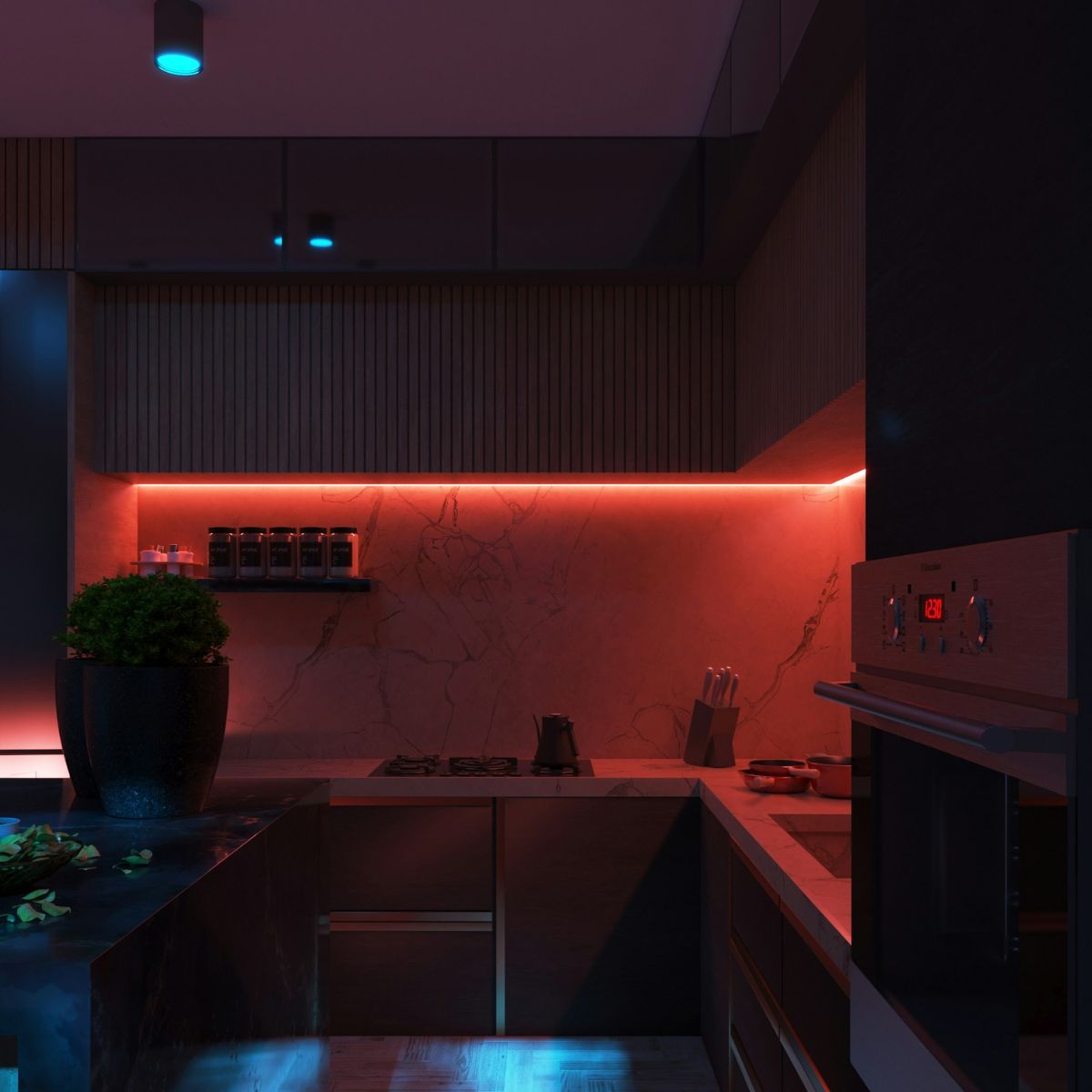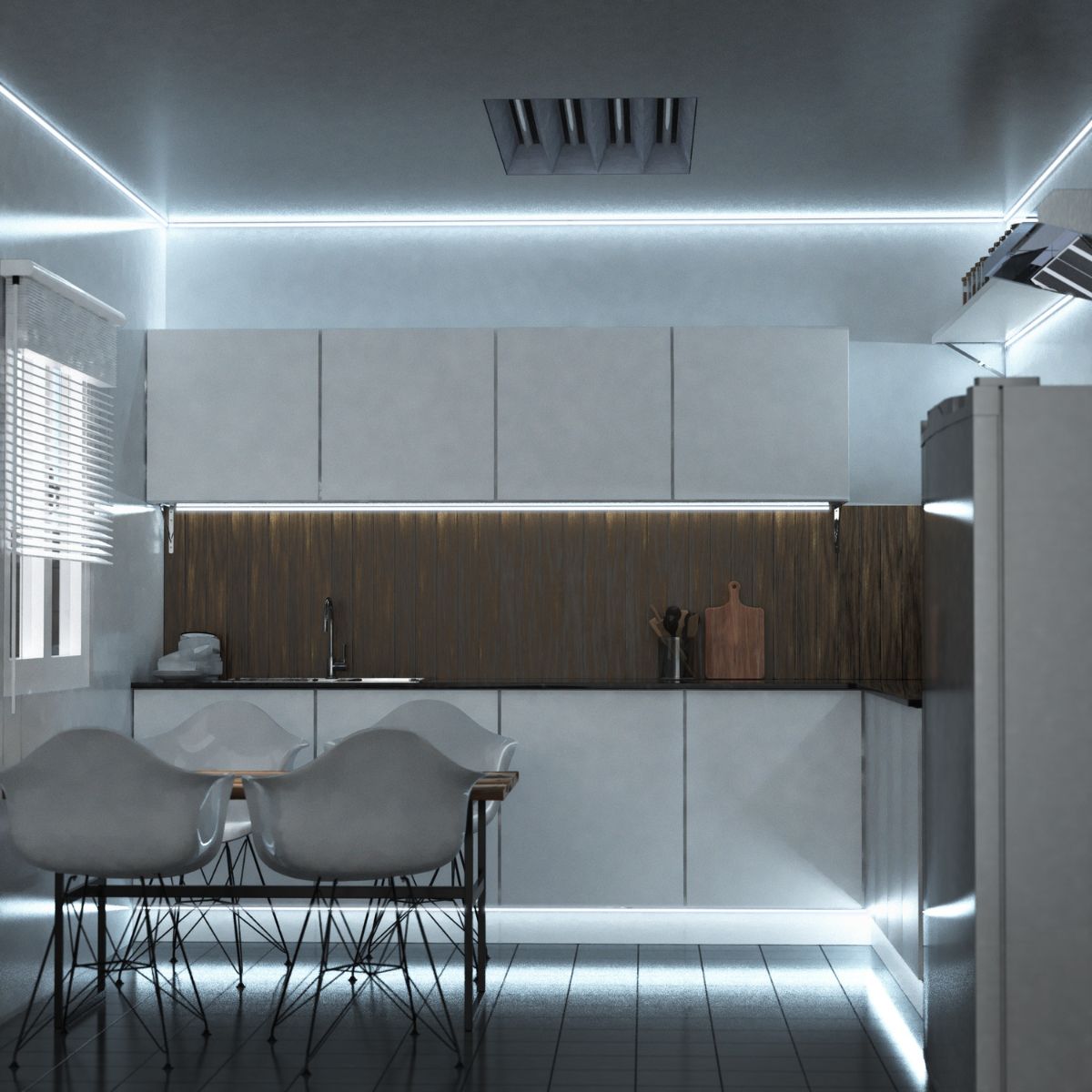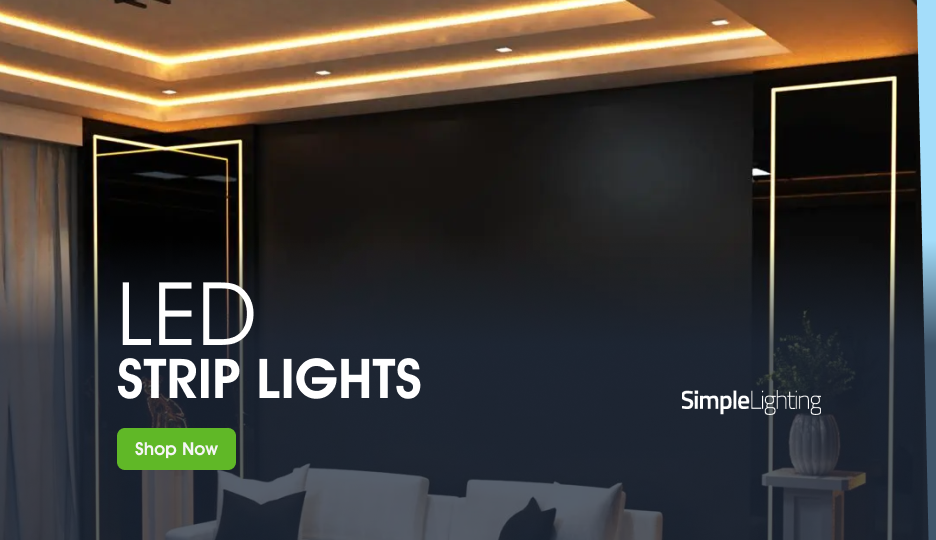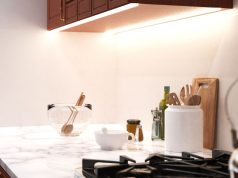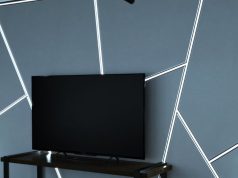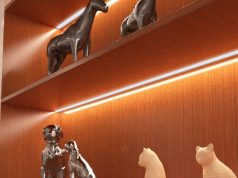Lighting the Future of Kitchen Design
The modern kitchen is no longer just a space for meal prep and cooking. It’s now the home’s social hub where you entertain guests, a place for relaxing (maybe with a glass of red wine or a cuppa), and a makeshift home office for getting work done.
In 2025, lighting is no longer just about visibility. It’s about expression, innovation, and atmosphere. It has now become a defining element of interior design.
Lighting nowadays is more intentional. And this year’s kitchen lighting trends reflect a new design philosophy: one that balances technology with warmth, sustainability with sophistication, and minimalism with personality.
People are now realising that their lighting choice is what shapes how the entire room feels and functions.
At Simple Lighting, we’ve seen firsthand how quickly kitchens across the UK have transformed, thanks to LED technology and design trends. In this post, discover (and take note of) kitchen lighting trends that not only create well-lit spaces but also ones that are intelligently illuminated.
Let’s flick the switch and get started.
Trend #1 – Seamless Integration: Invisible Lighting Design
One of the biggest movements we’re seeing (or rather NOT seeing) is invisible lighting.
These are the designs that hide the light source while maximising the glow. Think linear lights mounted behind light rail mouldings under your wall cabinets, LED strip lights recessed into ceiling coves, and subtle illumination behind shelving.
This lighting style creates a clean, architectural look, free from clutter or visual noise. Instead of being bulky fittings, your light becomes part of the structure. They feel more like a design detail rather than an add-on.
This style is great for kitchens with minimalist, Scandinavian, or open-plan themes.
Invisible lighting has become possible thanks to LED technology. Unlike traditional lights, which are usually bulky, LED lights feature ultra-slim profiles, high-performance diffusers, and flexible strip lighting that can be installed virtually anywhere.
Ceiling coves, under and over cabinets, inside handleless drawers, along plinths, inside shelves, along the kitchen island edges… There are numerous possibilities for invisible lighting in your kitchen. The effect? A modern kitchen that feels calm, coherent, and luxuriously simple.
Trend #2 – Layered Lighting for Functional Luxury
Gone are the days of living off only one overhead kitchen light. Lighting design in 2025 is all about layering.
The aim of this lighting style is to achieve both practicality and ambience by combining (or layering) ambient, task, and accent lights. This setup allows adjusting the space from bright and focused for cooking to soft and ambient for dining or entertaining.
A well-designed lighting plan typically includes:
- Ambient lighting: ceiling panels, recessed downlights, or diffused strip lighting that evenly brightens the space.
- Task lighting: under-cabinet LEDs or pendant lights focused over prep zones and islands. (Typically with a cool white light colour temperature.)
- Accent lighting: decorative pendants, shelf backlighting, or plinth lighting that adds mood and depth.
Smart dimmers and tunable white LEDs (which let you shift between warm and cool tones) are key tools in this layered approach. Pairing your lights with controls can help you easily transition from morning brightness to evening calm.
The balance between form and function offered by layering your lights transforms even a small kitchen from flat and claustrophobic to layered and functional. Because luxury is not determined by the size of the kitchen, but by the experience it provides.
Trend #3 – Warm, Natural Tones Over Stark White
LED lights are brighter than any traditional lighting, which makes them useful in the kitchen.
And for years, bright white LEDs dominated modern kitchen design. But nowadays, the trend is shifting toward warm, natural light that feels inviting… and more human.
In simpler 2025 terms:
❌ Clinical blue-white tones of 6000K
✅ Golden glow of 2700K–3000K (the light equivalent of early evening sunshine)
This design favours earthy materials, soft neutrals, and organic forms, since warm light enhances these palettes and creates a sense of comfort and balance. Now you might be wondering, “But doesn’t that mean that your lighting will be dim and dull?”
No. You can still achieve high brightness with warm tones by using quality LEDs and smart controls that maintain clarity while softening the atmosphere. The key here is still layering. Specifically, using brighter, natural light for worktops and warmer accents for dining areas.
There are linkable LED linear lights you can get that already come with a warm white tone. These are great for under-cabinet lighting.
Pro Tip:
Use tunable LEDs for easy and quick shifting between warm and natural white, making your space adaptable.
Trend #4 – Statement Pendants & Sculptural Fixtures
Minimalism in kitchens is great, but 2025 is all about making a statement. We’re talking eye-catching centrepieces that express personality and style.
Sculptural pendants and artistic fixtures are your go-to for statement lighting. Leading this trend are matte black finishes, smoked glass globes, and brushed brass accents, since these materials complement both industrial and luxury modern interiors.
The goal here is to bring visual contrast to neutral kitchens.
The staple of this style is still oversized pendants that double as art. Pair them with understated lighting (recessed LEDs or subtle linear strips) in other areas of the kitchen so the statement fixture shines (literally) as the hero element.
Styling tip:
Hang pendants in odd numbers (three or five) to create visual balance. Combine them with soft under-cabinet lighting to avoid dark spots and maintain harmony.
Trend #5 – Smart Lighting & Voice Control
Technoligia!
An expression so common in memes nowadays, and very much relevant to this lighting trend.
Lighting is at the forefront of technological innovation. And smart lighting systems, once a luxury, are now a mainstream commodity. We now have app and voice-controlled lights that were even science fiction decades ago.
“Hey Google, brighten kitchen lights for cooking.” And the kitchen suddenly bursts into life.
App and voice-controlled LEDs allow homeowners to:
- Adjust brightness and colour temperature instantly
- Set “mood scenes” for cooking, dining, or entertaining
- Control zones independently: For example, dimming the island lights while keeping worktops bright
With smart home system integration through Alexa, Google Home, Apple HomeKit or dedicated apps, lighting can now respond to routines, time of day, or even motion sensors. Imagine walking into your kitchen and having the lights gently fade on.
Now is the era of hands-free lighting.
Light fixtures like smart LED light bulbs, colour-changing panels, and wireless dimmers have become essential components of modern-day lighting. They offer a blend of personalisation, convenience, and efficiency that’s redefining everyday living.
It’s amazing how lighting can create a great impact on our lives.
Trend #6 – Energy Efficiency Meets Aesthetic Design
Sustainability isn’t just a buzzword in 2025. It’s a core design principle. We’ve seen a surge of homeowners seeking lighting that reduces environmental impact without, of course, compromising beauty or performance.
Switching to LED lights alone is already a big leap towards sustainability, as modern LEDs already consume up to 85% less energy than traditional bulbs. But innovation continues to push boundaries.
Advanced low-voltage systems, efficient drivers, and longer-lasting diodes are making lighting greener than ever. Investing in high-quality lighting means fewer replacements and a smaller carbon footprint. More designers are also focusing on eco-conscious materials like recycled aluminium, glass, or sustainably sourced wood.
Pair sustainability with aesthetic, and what do you get? A timeless lighting piece that ensures longevity not only in energy use but in style.
Eco insight:
If you’re looking to take your search for sustainable lighting to the next level, consider LEDs with replaceable components and recyclable housings, which are becoming the new gold standard in sustainable lighting.
Sustainable lighting is marrying longevity with conscious design.
Trend #7 – Ambient Colour & Mood Lighting
We’ve come a long way from considering RGB and RGBW as playful and futuristic (some even think they’re somewhat juvenile) to seeing them as a refined design tool.
In 2025, colour in the kitchen is all about subtlety and sophistication. Instead of neon tones or dramatic colour changes, designers now use gentle washes of colour to enhance mood and define zones.
Imagine:
- A soft amber glow beckoning from beneath plinths.
- A pale pinkish light under floating shelves.
- A gentle wave of blue outlining a ceiling recess.
These effects add depth and atmosphere to your kitchen. This is especially helpful in creating “zones” in open-plan homes where the kitchen blends with living spaces.
But too much RGB is also not welcome, as it can be distracting and chaotic. The secret lies in moderation; colour should complement, not compete.
Design idea:
Use tunable RGBW strips in kickboards or coving to shift between warm white for everyday use and subtle colour tones for evenings or gatherings.
Trend #8 – Light as Architecture
Lighting and architecture are merging like never before. More and more homes (and kitchens, in particular) are using light not only as an “add-on” to the space, but as a part of the architecture itself.
Designers are using light not just to highlight features, but also to define structure and movement within a kitchen. LEDs are being integrated into the very bones of the space. We’re seeing them outline islands, trace ceiling beams, or illuminate wall recesses.
These lines of light create visual flow and rhythm, guiding the eye and enhancing spatial perception.
- Small kitchens seem to widen.
- Low ceilings look taller.
- Floating shelves appear to hover.
- Worktops glow from beneath.
Even floor-level lighting helps subtly map pathways through open-plan areas. This architectural approach turns light from a flat source of illumination into a three-dimensional design element. It is what shapes how the kitchen feels as much as how it looks.
Design Inspiration:
Consider recessed LED profiles along island bases or ceiling contours to create form-defining light lines. The result is both futuristic and timeless: a true example of light as a building material.
The Future Looks Bright
More than being the central hub of your home, the kitchen is a space where technology, comfort, and design converge. Lighting is no longer a “nice to have” or an afterthought. It’s now the defining layer that greatly transforms surfaces, structures, and experiences.
From discreet illumination to architectural expression, this year’s trends celebrate lighting that’s smart, seamless, and sustainable.
Warm tones are (finally) replacing sterile clinical whites, energy-efficient LEDs are breeding eco-friendly designs, and smart lighting gives you total control over your lights. Your kitchen ambience is literally at the end of your fingertips…or voice, thanks to smart lighting and voice controls.
The future of kitchen lighting is human-centred.
Light needs to be softer, smarter, and deeply connected to the rhythms of daily life. Whether you’re planning a renovation or simply upgrading your fixtures, remember: great lighting isn’t just about seeing better; it’s about living better.
At Simple Lighting, we believe that your lights need to be able to transform your kitchen into a space you love spending time in. Discover our wide range of LED lights and start transforming your kitchen into the perfect space for you, whether it’s a trend or not.


